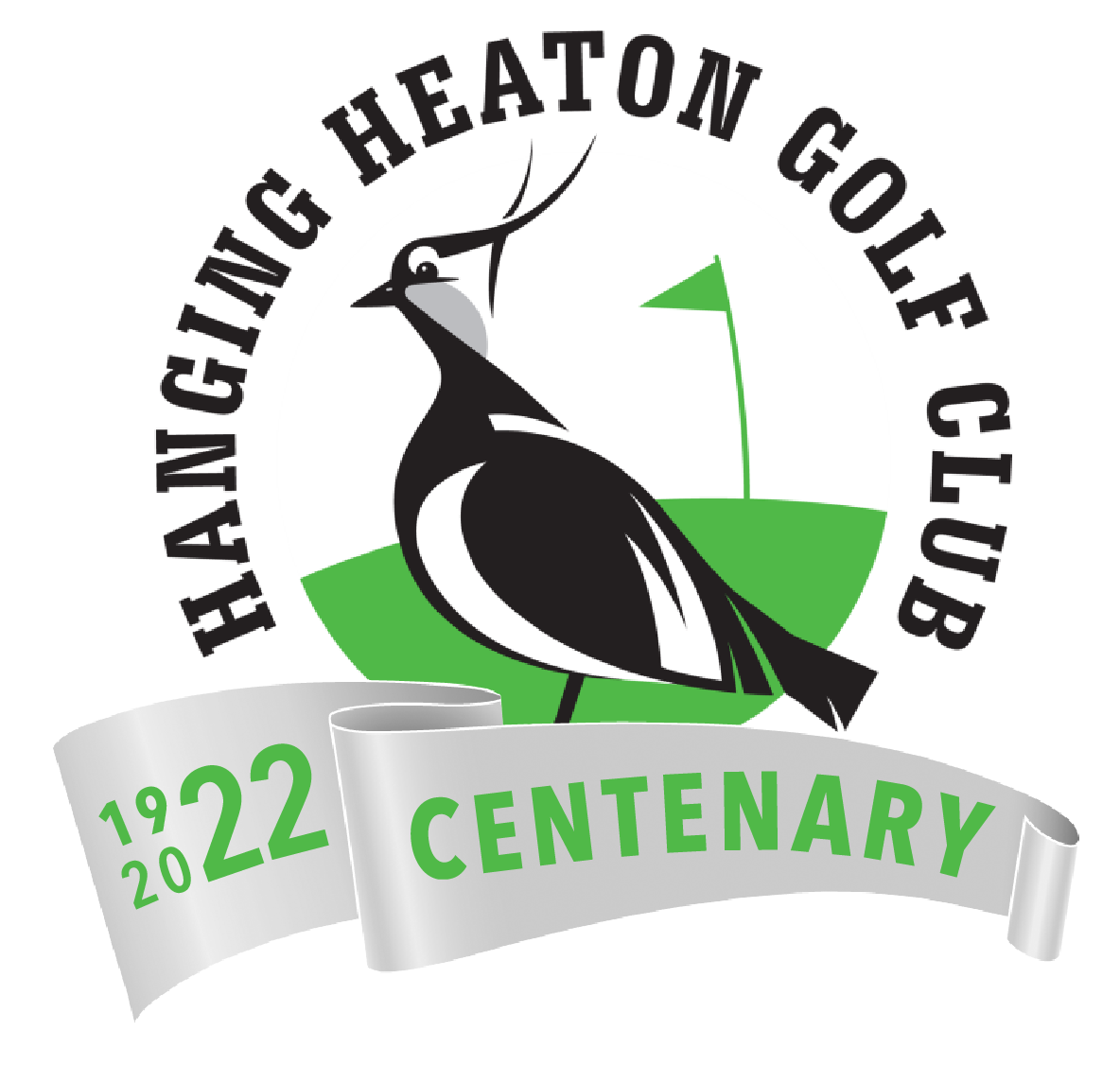About Us
Find out about the history of our course as we celebrate our centenary in 2022.
The Very Start
Hanging Heaton Golf Club was founded in 1922 when a group of seven golf enthusiasts started work on a strip of land above Commonside, Hanging Heaton.
They started levelling greens and tees which had to be fenced of to stop farm animals straying onto them.
Today that strip of land, which sits above Batley, has returned to its former state, now used by walkers, bike riders and horse riders alike.
Some of the old greens and tees are actually still visible. This area was known locally as Pump Fields or Tewit Land hence the bird which is now part of our Club logo.
The original Clubhouse was on Kirkgate and golfers in those days had to walk across the road to enjoy their golf which cost them an annual subscription of £1 for men and 10/- (50p) for ladies.
Our Current Home
In 1928 the Club moved to the present site off White Cross Road and commenced the development of the course. Year upon year improvements were made to the lay out as more land was acquired.
War broke out in 1939 which halted progress for the duration. In those days the Clubhouse was of a wooden construction and was built adjacent to some cattle sheds. This wooden hut was used until 1964 when the existing building was constructed.
The years since have seen continuous development with frequent refurbishments. The Club began an extensive improvement plan in 2019 in preparation for their centenary in 2022. In 2020 the club are to rework the entrance hallway and install new soft furnishings to keep the Clubhouse suitable for lots of different events.
The War Years
During World War 2 parts of the course were requisitioned by the War Office for Anti Aircraft Artillery purposes.
As our course is situated on the plateau above Caulms Wood its position was considered strategic.
Large Engineering works such as Yorkshire Copper and the Hunslet Engine Company were the targets of the German Air force. The Luftwaffe would use Ossett Church and Ossett Water Tower as land marks to guide them in and our golf course was right in the way.
We came under fire on many occasions and in return the gunners on the course shot down several of their number. However, on one occasion, it mistakenly shot down an RAF Spitfire.
Today there are several reminders that remain. In dry summers you can see the outline of the concrete track that was used to service one of the installations situated on the 2nd Green.
The course was returned to the Club in 1945 with £2000 compensation which went towards the cost of reinstating the course to its former glory. The turf which had been painstakingly removed by members in 1939 was carefully put back.
Post War
In 1948 Open Champion Fred Daly visited and presented the Captain’s Day prizes. Whilst at the Club he entertained members with stories about many golfing exploits that had taken place that year.
The Club is wholly owned by the members and is run by the committee elected every March at the AGM. Every penny is put back into the Club either in course or club development. In 1958 the Club bought the freehold to the course which guaranteed the Clubs independence.
The Club is rightly proud of its origins from humble beginnings, with those magnificent seven founder members, to the present day.
It plays its full part as a member of the English Golf Union, The Yorkshire Union of Golf Clubs and The Halifax and Huddersfield Union of Golf Clubs.
In 1966 HHGC was one of the founder members of the Heavy Woollen League. Our Club team is well respected and usually fights towards the top of table each year.
2020 And Beyond
The Clubhouse is exceptionally well appointed and makes an ideal venue for social and business functions.
Our in house Catering Manager will be happy to advise on menus to suit all occasions. In addition we have a very well stocked bar including cask and keg beers, draught and bottled lagers and a large range of wines and spirits including some fine single malt whiskies tended to by our steward.
On the golf side the Club offers the services of our resident PGA Golf Professional with golf lessons and a well equipped shop selling the latest golf equipment.
In 2019 we added The Yorkshire Golf Simulator which cleverly connects to both the Clubhouse and the bar. This facility was opened by PGA Professional Graeme Storm. Members and non-members alike use this facility all year round, especially in winter, to enjoy a social game or practice their swing ready for the course.
Friendliest Club Around
Hanging Heaton Golf Club is considered one of the friendliest clubs in the area.
We have sections that cater for all golfing abilities, excellent practice facilities and an active social membership and range of events.
New members and guests are most welcome and there are various membership packages available throughout the year.

